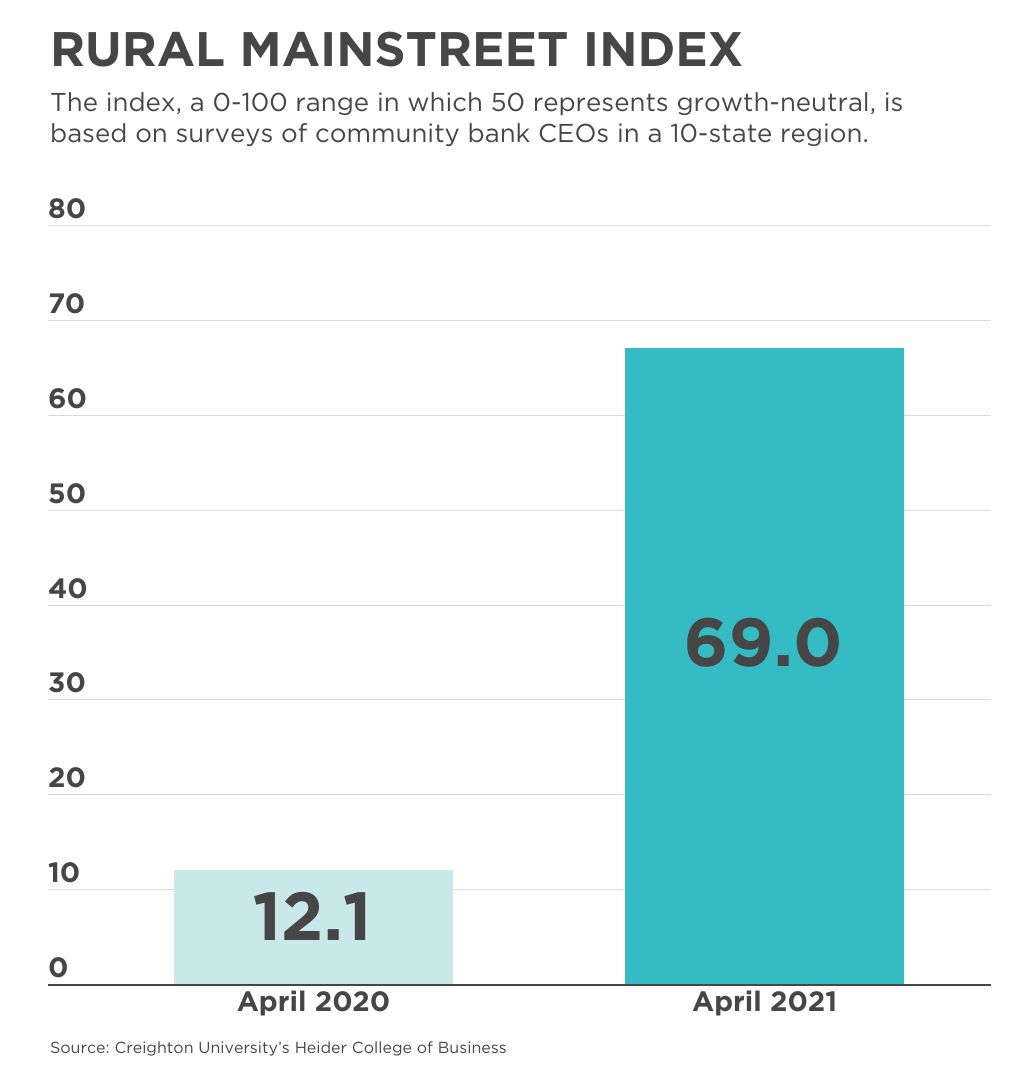[section]
[section-item]
[row]
[column 12]

[/column]
[/row]
[/section-item]
[/section]
Strong economic growth continues in parts of rural America, but a lack of available workers is restraining job growth.
April's Rural Mainstreet Index declined slightly from March's record high of 71.9 but remained strong at 69.0. About 38% of bank CEOs reported their local economy expanded between March and April.
The
Rural Mainstreet Index surveys community bank presidents and CEOs in 10 Western and Plains states. The index ranges between 0 and 100, with 50.0 representing growth neutral.
Higher grain prices, continued low interest rates and growing exports have helped the economy in rural areas. Still, “current rural economic activity remains below pre-pandemic levels," said Ernie Goss, economics professor at Creighton University's Heider College of Business, which produces the index.
April's new hiring index sank to 62.5 from 72.9 in March. Nonfarm employment is down by 4.2% compared to pre-pandemic levels, according to the U.S. Bureau of Labor Statistics. In some areas, the number of job openings exceeds the number of qualified workers.
“As a result, it will take many months of above growth neutral readings to get back to pre-COVID-19 employment levels for the region," said Goss.
This month's survey reported strong growth in home and farmland sales. The home-sales index climbed to a record 78.6 from March's 76.6, with many homes selling at record levels above list prices.
“The local housing market is on fire with most sales having multiple bids and selling for over the list price," said Steve Simon, CEO of South Story Bank in Huxley, Iowa.
The farmland price index advanced to its highest level since November 2012, remaining above growth neutral for a seventh straight month. April's reading climbed to 78.6, its highest level since 2012, and up from 71.9 in March.
Bankers reported that approximately 9.1% of farmland sales over the past six months have gone to nonfarmer investors.
This month's confidence index, which reflects bank CEO expectations for the economy six months out, took a slight dip from March's 76.7 but remained strong at 72.4.
“Federal stimulus checks, improving grain prices, and advancing exports have supported confidence offsetting negatives from pandemic ravaged retail and leisure and hospitality companies in the rural economy," said Goss.
